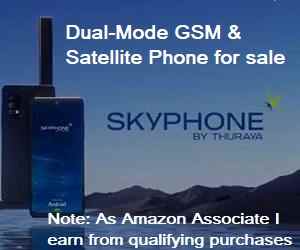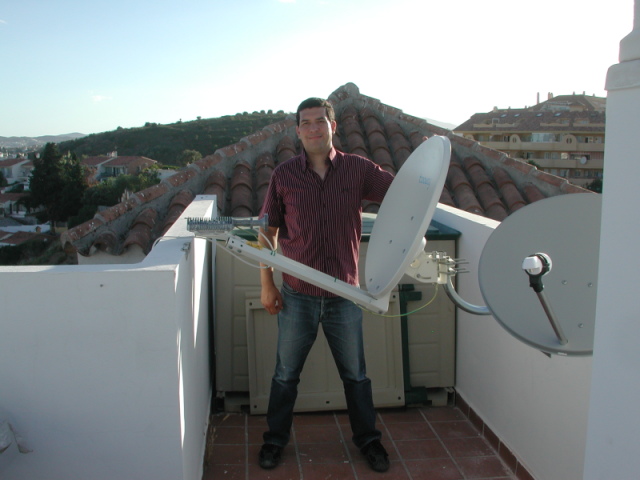That link is not working for me right now for me.
Try this instead:
https://www.accesointernetsatelital.com/Data_speed_congestions.pdfSave the document so you can study it carefully. It is an important description of your service.
Here is something I wrote in reply to someone asking about Ka band satellite internet access services and the effect of rain and snow.
All 'cheap' satellite internet access services involve sharing satellite capacity amongst many users.
"I hope this educational example helps !
2000 sites share a 64 Mbit/s download carrier. In clear sky all get their "up to 20 Mbit/s" standard service. Note that many sites share the capacity in a time shared fashion. Three sites could be active simultaneously, each at 20 Mbit/s. 100 sites could be active simultaneously with bit rate of 640 kbit/s each. If a 100% fill was possible and all sites active, they could each get 32 kbit/s.
During mild propagation events, a small basic link margin, say 3 dB, means that there is no adverse effect. This assumes site dishes are accurately aligned and not casually set up so they just work OK.
In the download direction during more degraded propagation conditions at a single site the bit rate to that site is reduced to say 21 Mbit/s, but there is the opportunity, if the carrier is not congested, for the data block to that particular site to be tripled in length, thus maintaining the customer bit rate per whole second. Because the bit rate down to all the other sites (in clear sky) the total carrier capacity is hardly affected.
Obviously if many or all sites in a beam are suffering then there will be congestion as the total capacity available is reduced to 21 Mbit/s (10.5 kbit/s per site). A typical DVB-S2 carrier will have structure made up a blocks of different bit rates and modulation/coding types, say 64, 50 and 21 Mbit/s, and the proportion of each type, say 0.95 8PSK, 3/4 8PSK, 1/2 QPSK, will depend on the distribution of types of weather across the beam coverage.
Uplink attenuation is similarly mitigated. Good customer dish pointing should give a basic small link margin. If the customer transmit amplifer is rated at say 3 dB above the clear sky operating power then there is scope for uplink power control to deal with some uplink attenuation. Uplink burst bit rate can be reduced by half and burst length doubled. As with the downlink, the effect on everyone's service is minimal if only a few sites are affected. Obviously if all sites in a beam are affected by rain the uplink capacity is reduced, since there will not be enough time for them all to transmit with double length bursts (at half speed) to achive the normal per-second throughput.
The above attenuation mitigation methods can reliably deal with attenuations of around 5 - 6 dB, thus dealing with all but the most severe rain events. Given that satellite connection to the internet is the "last hope" option for many customers I think they are generally grateful for a service that works for at least 99.5% of the time, since otherwise they might have nothing at all. A very few customers have special high reliability or high bit rate needs and sales people should be careful not to mislead such people. If a customer needs an outside broadcast feeder link, for example, there is no reason why a special inbound carrier cannot be set up, perhaps using a larger customer dish and transmit amplifier.
Regarding dry snow, this is not a big deal, the problem comes when the snow melts or turns to solid ice on the dish. Carefully brush it off or use heaters."
Most satellite internet services implement an FAP.
I've just re-read the document. It says that for uncontended service the price is e24000. I guess that applies to 20 Mbit/s for 1 month, so if you are paying e24 a month you get 1/1000 share of 20 Mbit/s.
If your are an early user, when the satellite is empty you will get a really good service. If it is full then you really only get your fair share.




